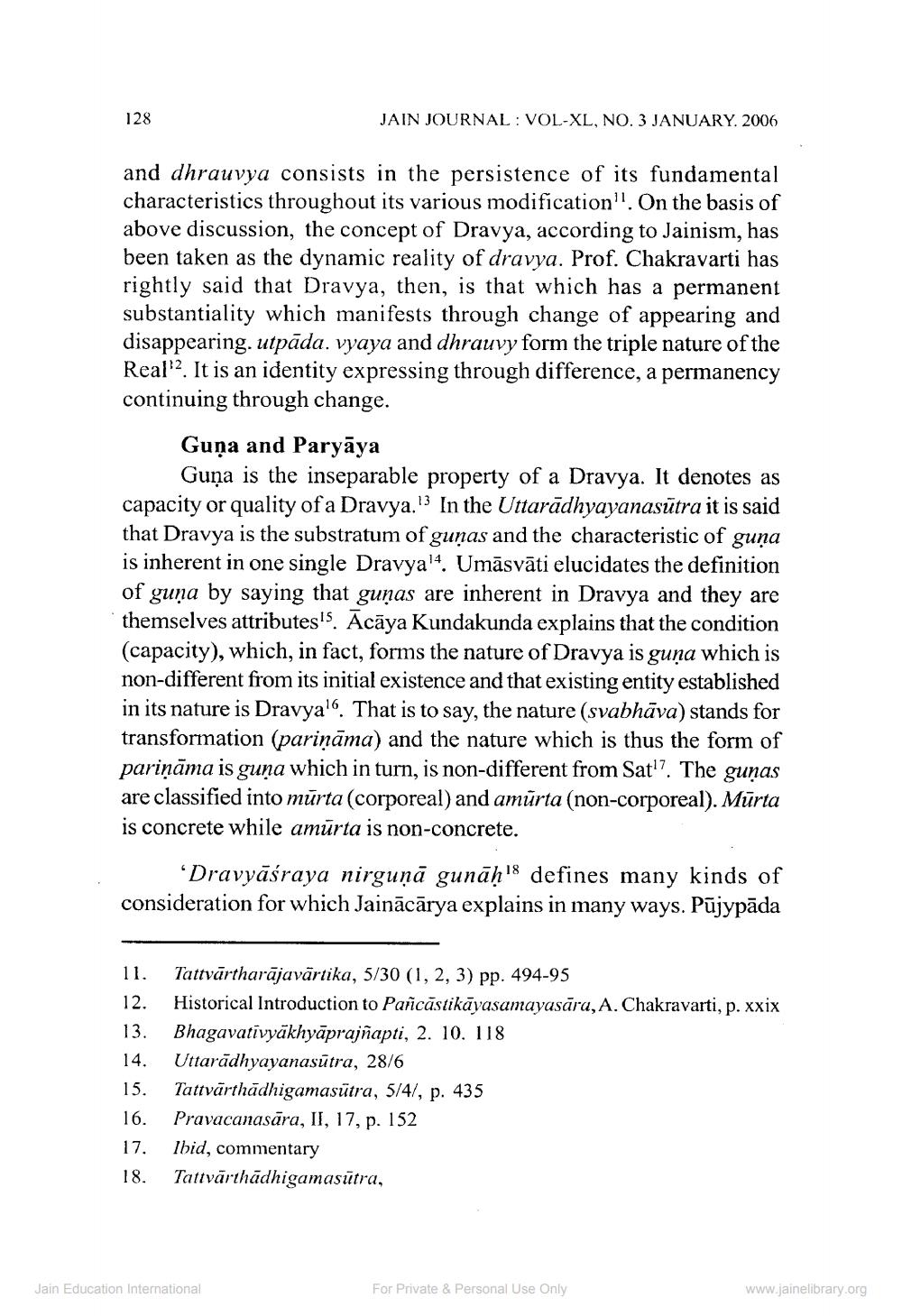________________
128
and dhrauvya consists in the persistence of its fundamental characteristics throughout its various modification". On the basis of above discussion, the concept of Dravya, according to Jainism, has been taken as the dynamic reality of dravya. Prof. Chakravarti has rightly said that Dravya, then, is that which has a permanent substantiality which manifests through change of appearing and disappearing. utpāda. vyaya and dhrauvy form the triple nature of the Real'. It is an identity expressing through difference, a permanency continuing through change.
JAIN JOURNAL VOL-XL, NO. 3 JANUARY. 2006
Guņa and Paryāya
Guna is the inseparable property of a Dravya. It denotes as capacity or quality of a Dravya.13 In the Uttaradhyayanasūtra it is said that Dravya is the substratum of gunas and the characteristic of guna is inherent in one single Dravya14. Umāsvāti elucidates the definition of guna by saying that gunas are inherent in Dravya and they are themselves attributes's. Acaya Kundakunda explains that the condition (capacity), which, in fact, forms the nature of Dravya is guna which is non-different from its initial existence and that existing entity established in its nature is Dravya'. That is to say, the nature (svabhava) stands for transformation (pariņāma) and the nature which is thus the form of pariņāma is guna which in turn, is non-different from Sat17. The gunas are classified into murta (corporeal) and amurta (non-corporeal). Murta is concrete while amurta is non-concrete.
'Dravyasraya nirguṇā gunāḥ18 defines many kinds of consideration for which Jainācārya explains in many ways. Pūjypāda
11.
12.
13.
14.
15.
16.
17.
18.
Tattvārtharājavārtika, 5/30 (1, 2, 3) pp. 494-95
Historical Introduction to Pañcāstikāyasamayasara, A. Chakravarti, p. xxix
Bhagavativyākhyaprajñapti, 2. 10. 118
Uttaradhyayanasūtra, 28/6
Tattvärthadhigamasutra, 5/4/, p. 435
Pravacanasara, II, 17, p. 152
Ibid, commentary
Tattvärthadhigamasutra,
Jain Education International
For Private & Personal Use Only
www.jainelibrary.org




